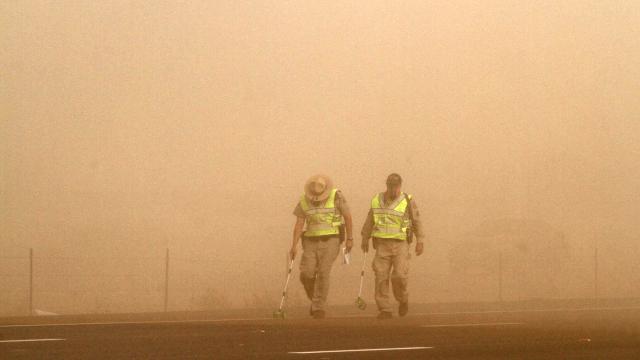Called the “silent epidemic,” a little-known fungal disease called valley fever has become 10 times more common in the past decade. Its fungal spores are being spread by dust storms in the American Southwest. Exactly why valley fever suddenly increased has nagged at public health officials, but a piece in The New Yorker suggests something quite prosaic is partially responsible — construction.
Valley fever is endemic to the Southwest desert — including California, Arizona, New Mexico, Nevada, and Texas — which means that the fungus predates modern human settlement in the region. Dana Goodyear writes, for example, about a region just north of Los Angeles, where development has encroached into valley fever territory:
Antelope Valley has seen its population double in 30 years, and it has been transformed from a sleepy agricultural backwater to a dense exurb. Fields that once grew alfalfa — a water-intensive crop that has become too expensive to cultivate — now grow houses, in master-planned communities of 20-five hundred units.
People have stubbornly insisted on living in inhospitable environments before, devising technology — central heat or mosquito-killing pesticides, for example — to survive. But the very construction of all these new houses may be stirring up fungal spores in the Southwest. The fungus usually lives as long filaments in the soil that break off as airborne spores. Outbreaks tend to occur after disturbances in the soil, such as archeological digs, earthquakes, or dust storms. It’s not a stretch to add construction to the list.
Dust storms that spread spores are becoming worse with the Southwest’s ongoing drought. Public health officials have also blamed rising temperatures from climate change, which make the region hotter and drier, for part of the increase in valley fever. Climate change is also expanding the range for a whole suite of diseases, as pathogens survive in places once too cold or otherwise inhospitable to them. At the same time, the human population is sprawling, so these ranges increasingly overlap.
It’s possible we could come up with a technological solution for valley fever — a vaccine, better dust filters, or even fungus-killing bacteria, as The New Yorker piece hints at. But in the long run, there’s another way of thinking about it. Rather than stubbornly continuing to live in inhospitable environments, perhaps there are places where settlements simply don’t belong? [The New Yorker]
Lead image: A 2011 dust storm in Arizona by AP Photo/Darryl Webb
